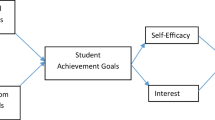Abstract
Previous research has shown that contingent candy reward can increase the measured IQ of low-IQ children, but has little effect on the performance of high-IQ children. Implicit in these findings is the suggestion that children of high ability benefit more from the intrinsic reinforcement available in taking a test than do low-ability children, the latter responding more to extrinsic tangible reward. The present study examined this proposition by randomly assigning 33 high performers and 33 low performers to receive (a) intrinsic feedback alone, (b) noncontingent candy reward, or (c) contingent candy reinforcement while taking a derived picture vocabulary test which had approximately equal difficulty of items in each half. An evaluation of the intratest performance of each group, with a mixed design analysis of variance, revealed that only the low performers receiving contingent extrinsic reinforcement improved significantly within the test session. High-performing children appeared to do as well or better under intrinsic feedback alone as under conditions of external tangible reward.
Similar content being viewed by others
References
ANNETT, J. 1969. Feedback and human behaviour. Baltimore: Penguin Books.
CLINGMAN, J., & FOWLER, R. L. 1975. The effects of contingent and noncontingent reinforcement on the IQ scores of children of above average intelligence. Journal of Applied Behavior Analysis, 8, 90.
CLINGMAN, J., & FOWLER, R. L. 1976. The effects of primary reward contingency on the IQ performance of grade school children as a function of initial IQ level. Journal of Applied Behavior Analysis, 9, 19–23.
CORNSWEET, T. N. 1962. The staircase method in psychophysics. American Journal of Psychology, 75, 485–491.
DUNN, L. M. 1965. Expanded manual for the Peabody Picture Vocabulary Test. Circle Pines, Minn.: American Guidance Service.
EDLUND, C. V. 1972. The effect on the test behavior of children as reflected in the IQ scores when reinforced after each correct response. Journal of Applied Behavior Analysis, 5, 317–319.
GREENWOOD, D. I., & TAYLOR, C. 1965. Adaptive testing in an older population. The Journal of Psychology, 60, 193–198.
HUTT, M. L. 1947. A clinical study of “consecutive” and “adaptive” testing with the revised Stanford-Binet. Journal of Consulting Psychology, 11, 93–103.
KIRK, R. E. 1967. Experimental design: Procedures for the behavioral sciences. Belmont, Calif.: Brooks/Cole.
LORD, F. M. 1974. Individualized testing and item characteristic curve theory. In D. H. Krantz, R. C. Atkinson, R. D. Luce & D. Suppes (Eds.), Contemporary developments in mathematical psychology (Vol. II). San Francisco: Freeman.
SATTLER, J. M., & THEYE, F. 1967. Procedural, situational, and interpersonal variables in individual intelligence testing. Psychological Bulletin, 68, 347–360.
SCHONELL, F. E. 1956. Educating spastic children. London: Oliver & Boyd.
STAATS, A. W., MINKE, K. A., GOODWIN, W., & LANDEEN, J. 1967. Cognitive behavior modification: “Motivated learning” reading treatment with sub professional therapy-technicians. Behavior Research and Therapy, 283-299.
TERMAN, L. M., & MERRILL, M. A. 1960. Stanford-Binet intelligence scale. Boston: Houghton-Mifflin.
Author information
Authors and Affiliations
Rights and permissions
About this article
Cite this article
Fowler, R.L., Clingman, J. The Influence of Intrinsic and Extrinsic Reward on the Intratest Performance of High- and Low-Scoring Children. Psychol Rec 27, 603–610 (1977). https://doi.org/10.1007/BF03394483
Published:
Issue Date:
DOI: https://doi.org/10.1007/BF03394483




